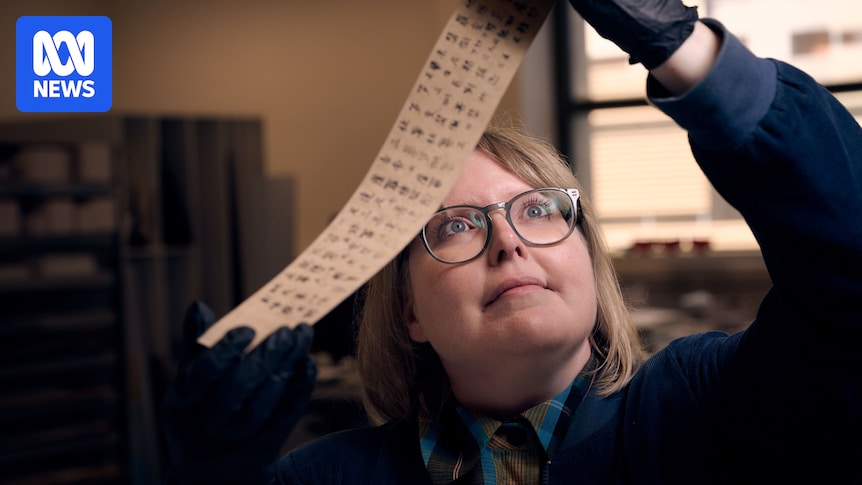
In the heart of Melbourne, the State Library of Victoria presents an exhibition that transports visitors through centuries of literary history. At the center of this journey is the Hyakumantō Darani, the oldest known mass-printed text in the world. This finger-length Buddhist prayer scroll, housed in a glass cabinet, dates back over 1,300 years, predating the Gutenberg press by more than seven centuries.
The Hyakumantō Darani, which translates to “1 million pagodas and Dharani prayers,” was originally commissioned by the Japanese Empress Shōtoku in 764. Dr. Anna Welch, the principal curator at the library, explains that this ancient text was printed in Japan using Chinese characters, showcasing a remarkable fusion of cultures. The scroll is the centerpiece of the library’s 20th anniversary World of the Book exhibition.
Oldest Surviving Literature
The exhibition spans 4,000 years of technological advancements in recorded writing, beginning with the oldest object in the library’s collection: a 4,000-year-old cuneiform tablet from Southern Mesopotamia, now Iraq. This matchbook-sized stone piece, dated to 2050 BC, serves as a proto-tax receipt and uses the script that recorded the Epic of Gilgamesh, the world’s oldest surviving work of literature.
New additions to the library’s collection include a medieval scribe’s knife from the 15th century, used to hold down vellum—a parchment made from animal skin. Dr. Welch describes it as the “white-out of its day,” used to scrape off mistakes. The knife, along with the oldest book in Australia, the De Institutione Musica from 1100 AD, brings the tactile world of medieval bookmaking to life.
From Hokusai to Astro Boy
The Hyakumantō Darani inspired a section of the exhibition exploring Japan’s influence on the West and vice versa. This mini exhibition highlights pre-Gutenberg mass printing and the artistry of Japanese woodblock prints, featuring works from Hokusai to Kawanabe Kyōsai. Visitors can see Japanese editions of popular Western books alongside Westernized versions of Japanese art, creating a cultural dialogue akin to peering through Alice’s looking glass.
Among the exhibits are a manga version of Les Misérables and an English translation of Astro Boy, juxtaposed with Teenage Mutant Ninja Turtles books. The World of the Book exhibition showcases over 300 works across five thematic areas, including a 1688 edition of the first science fiction novel by a woman, The Blazing World by Margaret Cavendish, and illustrated editions of Oscar Wilde’s novels.
Preserving Literary Treasures
The exhibition highlights diverse printing and book manufacturing technologies, many of which require careful preservation due to their sensitivity to light. One notable exception is a large codex art book by Lebanese Australian artist Deanna Hitti, featuring a cyanotype—a 19th-century light-sensitive photographic process. Dr. Welch notes that while cyanotypes fade quickly when exposed to light, they can “recharge” when closed.
Dr. Welch reflects on the exhibition’s ability to evoke the materiality of books and their cultural significance. “These books have lives,” she says. “They are like magic books to me, possessing an intangible quality that transcends their material form.”
The World of the Book exhibition is free to the public and will run at the State Library of Victoria until May 17, 2026, offering a unique opportunity to explore the rich history of written communication.







